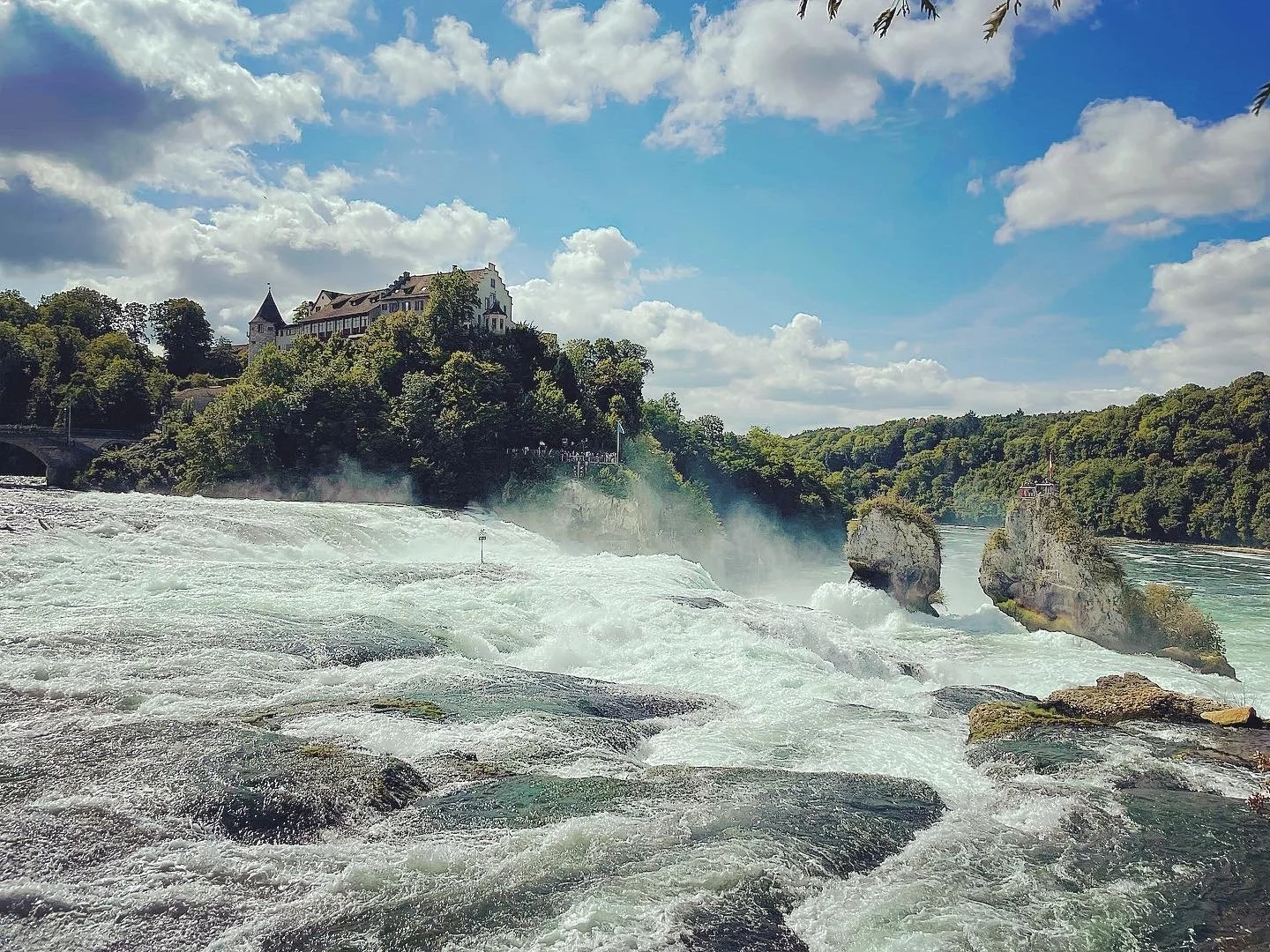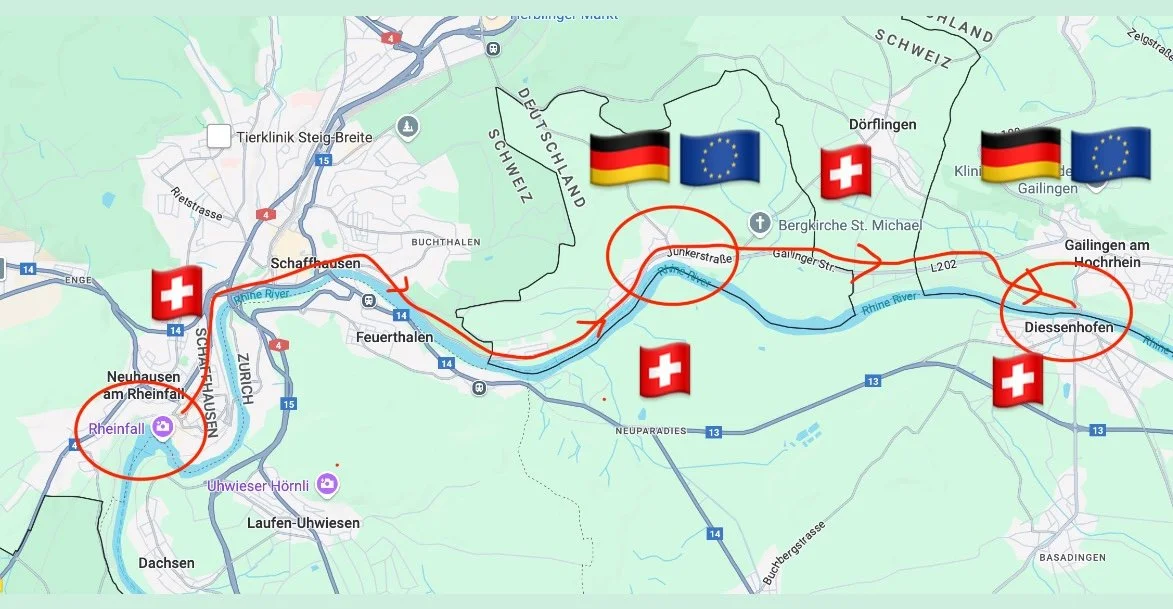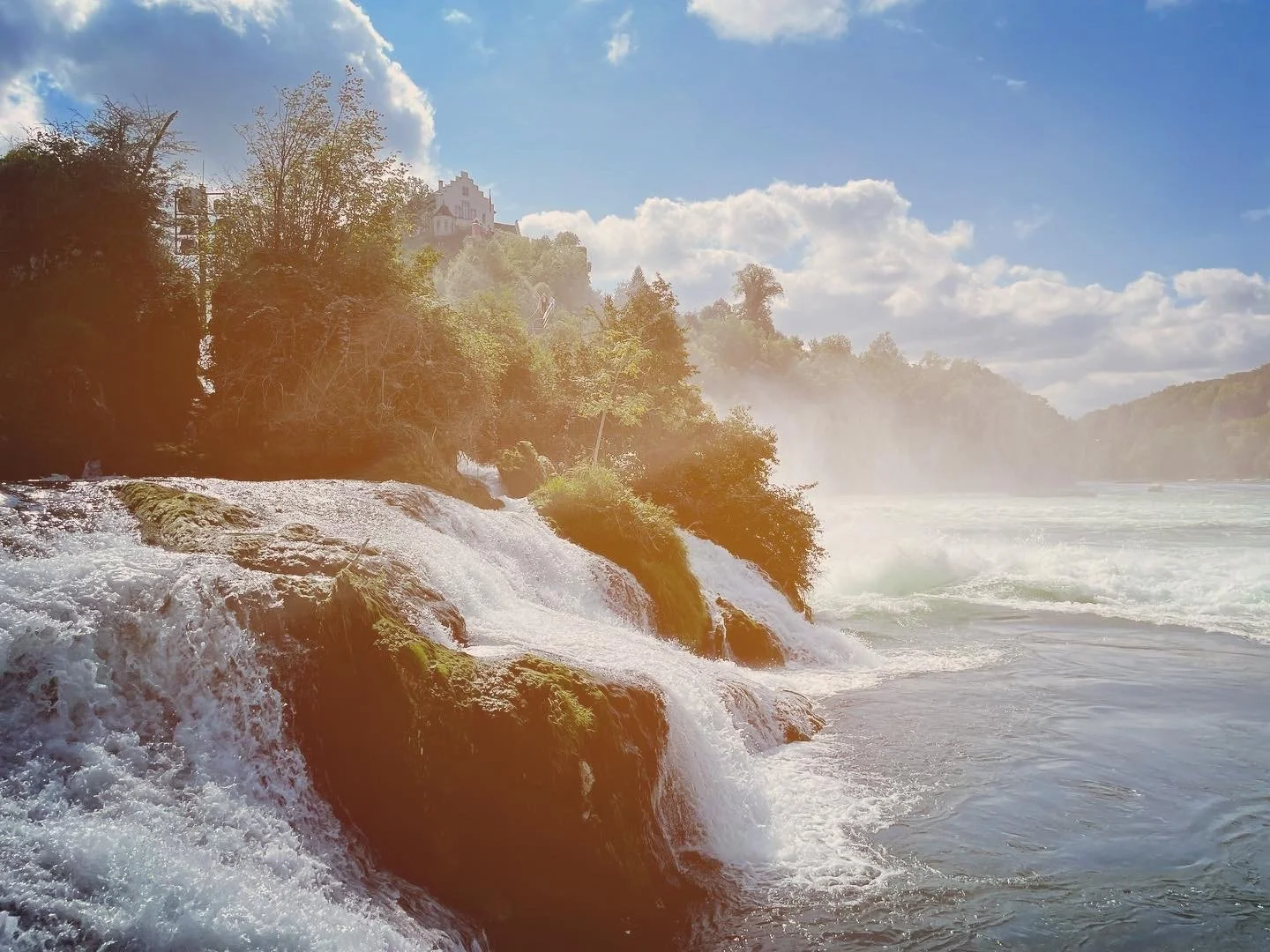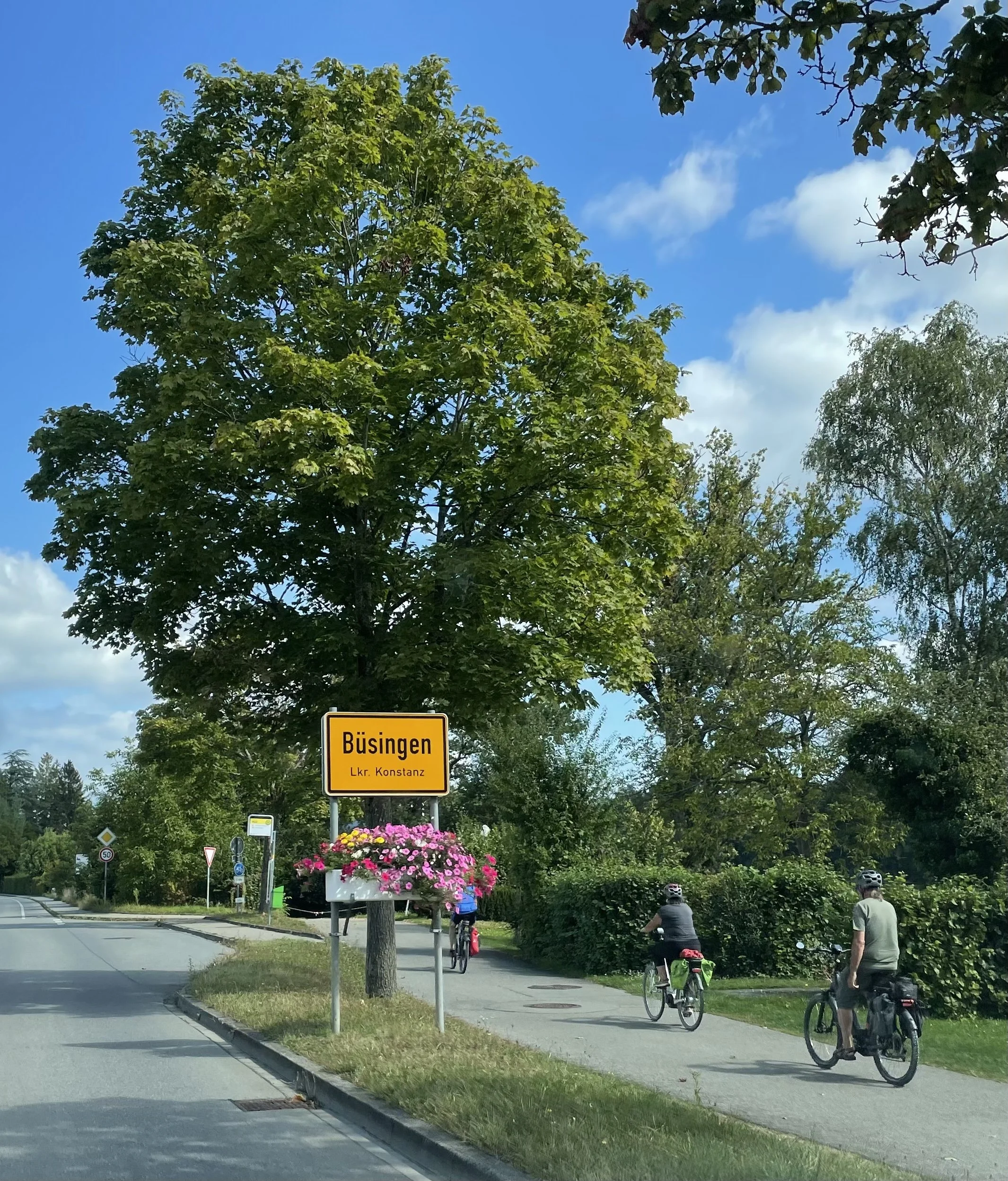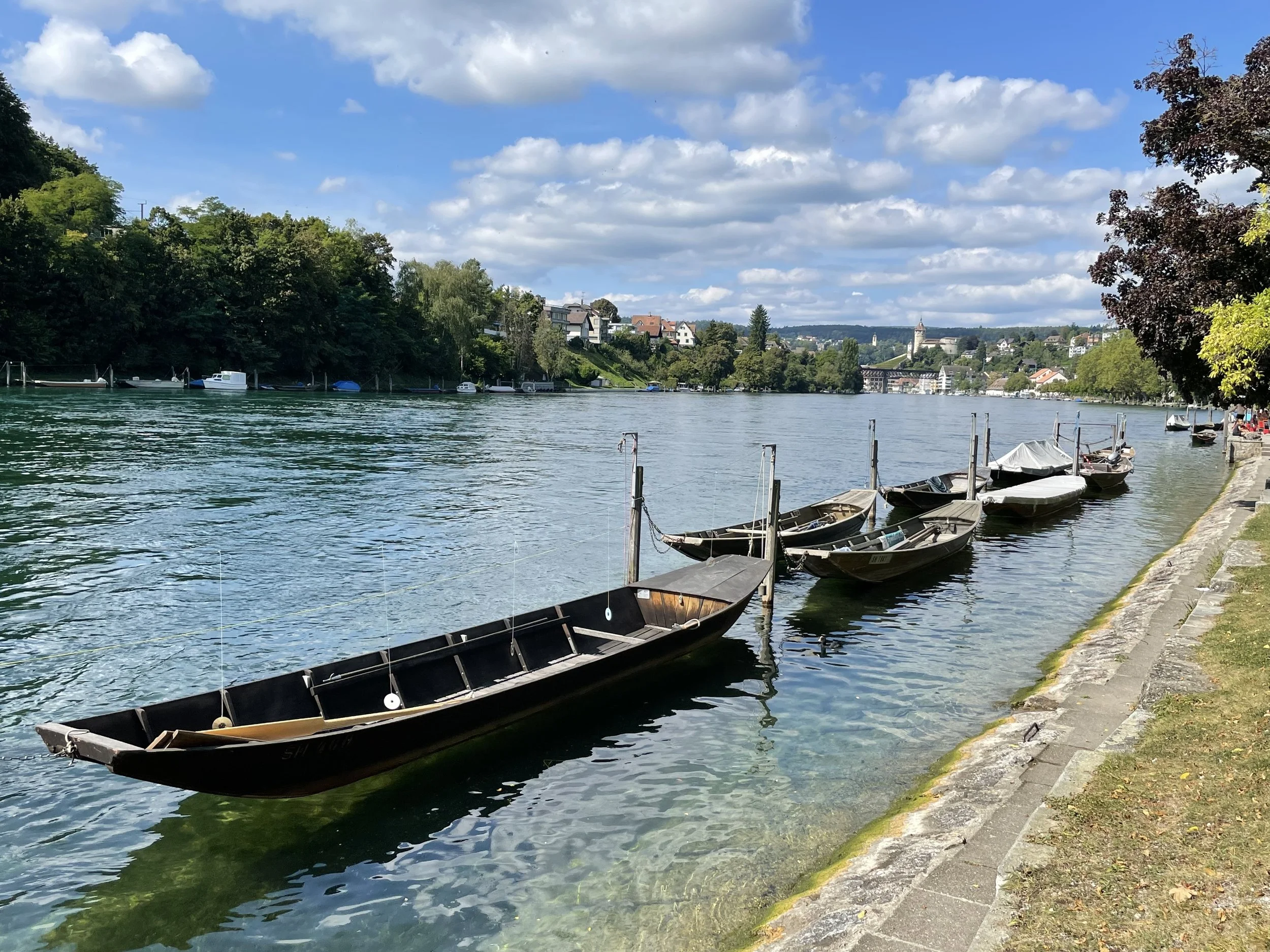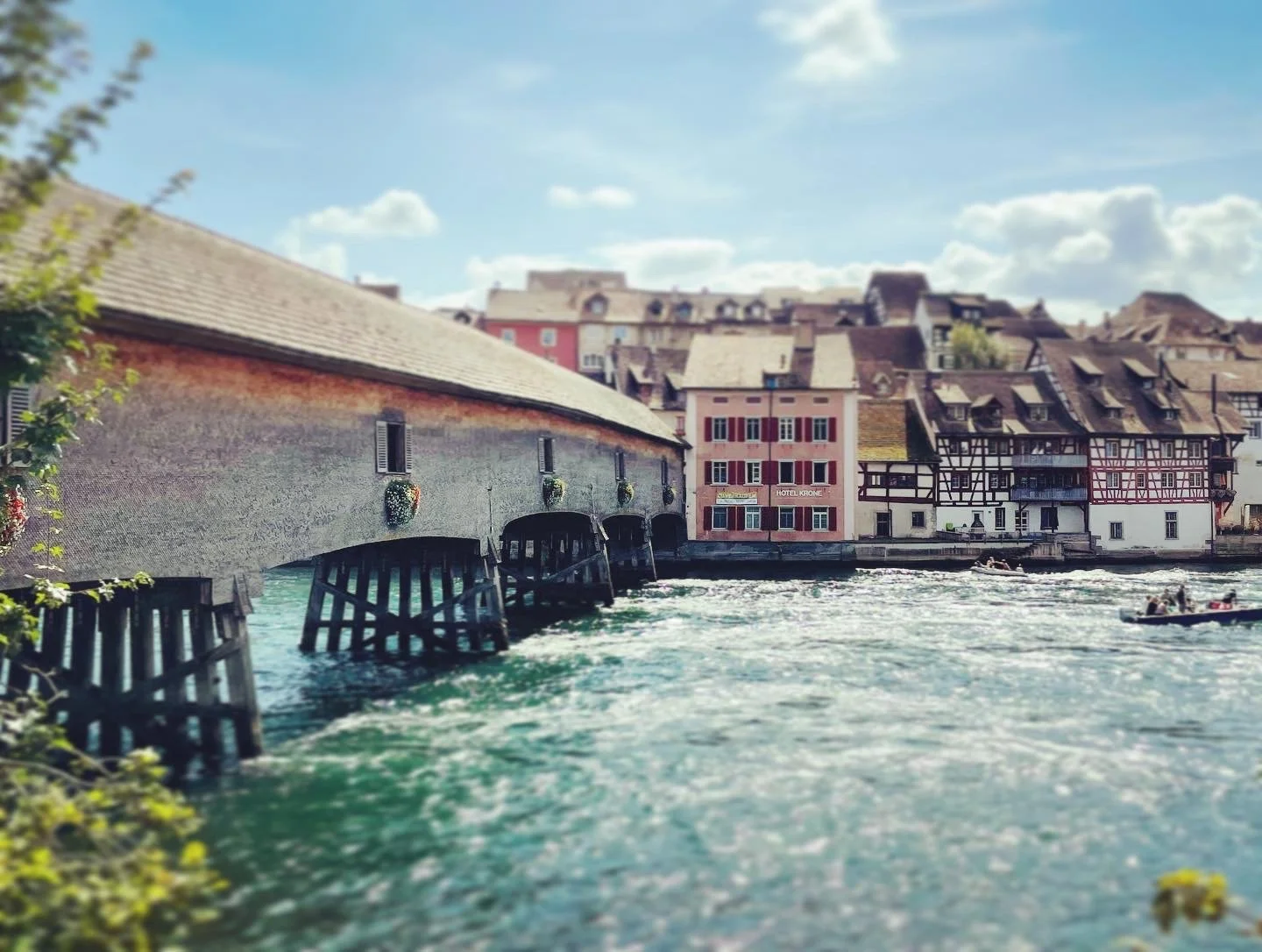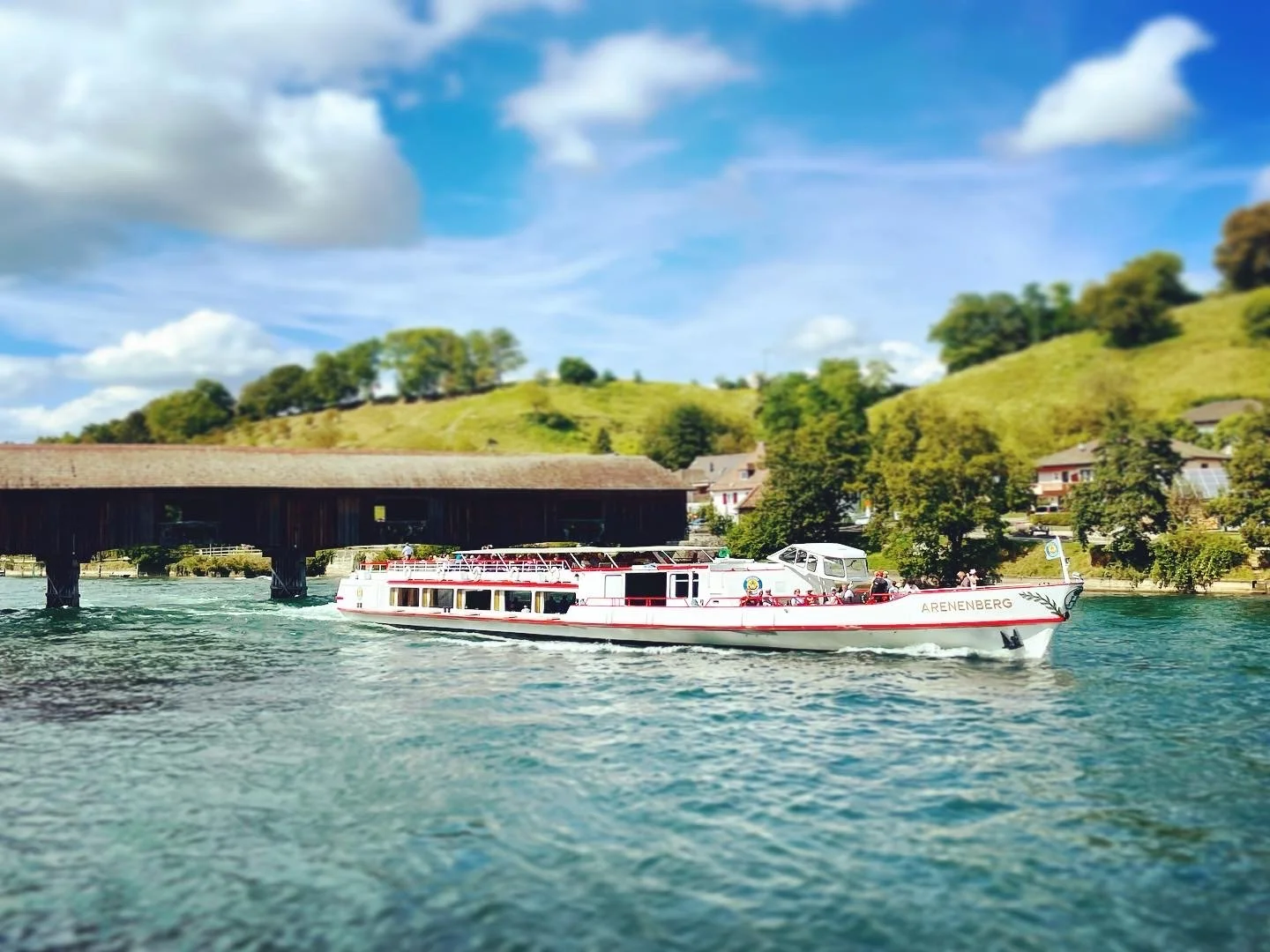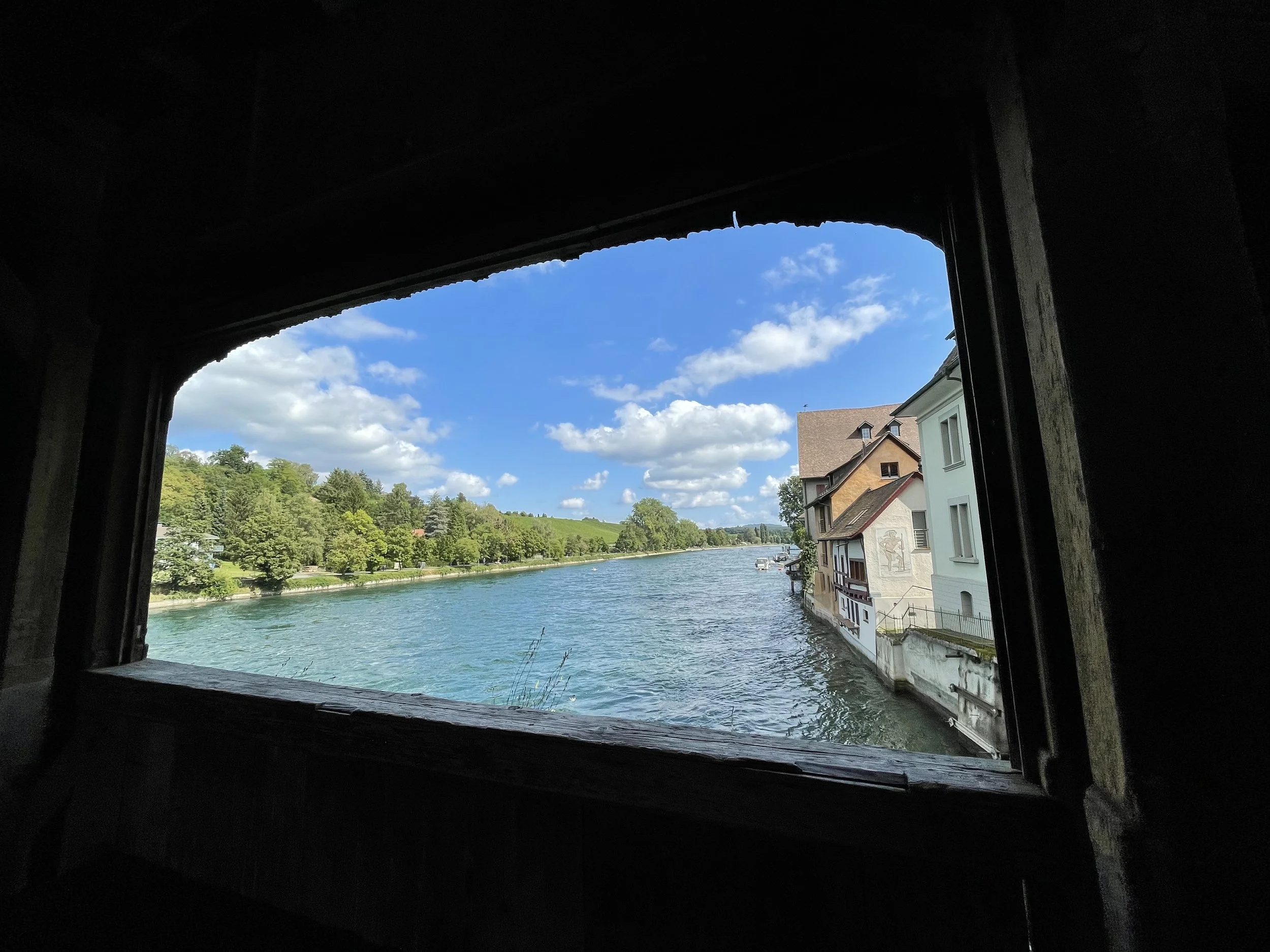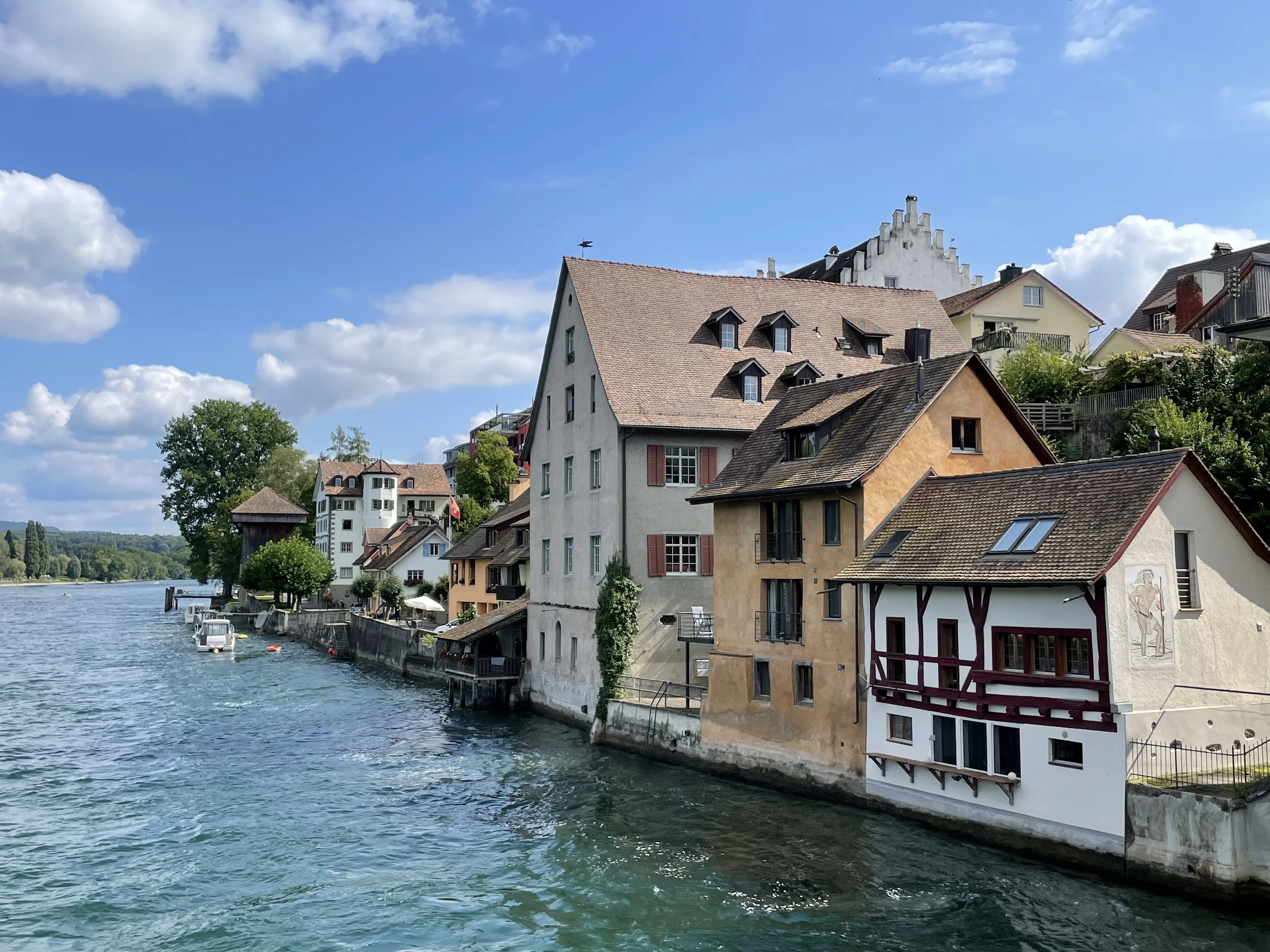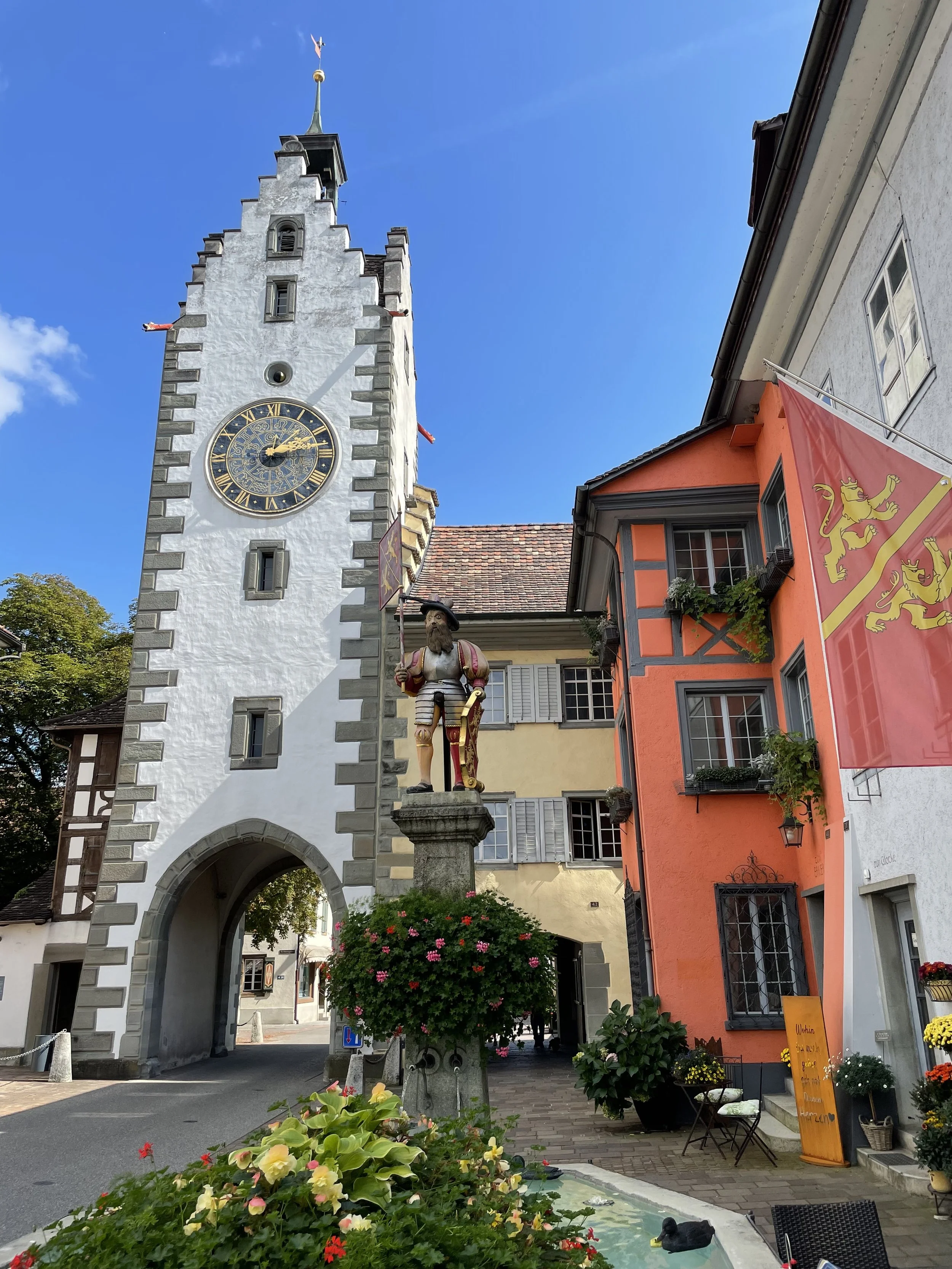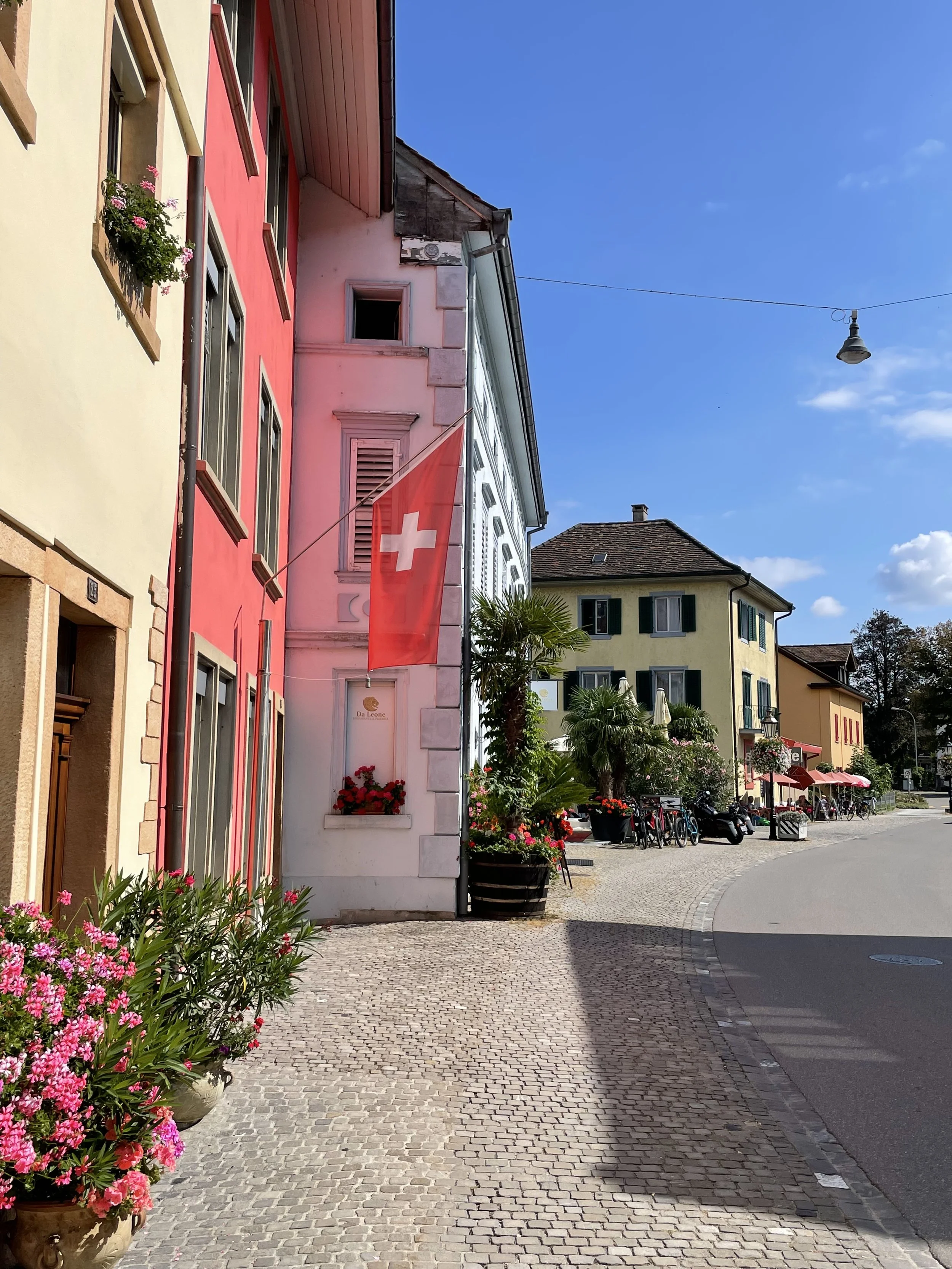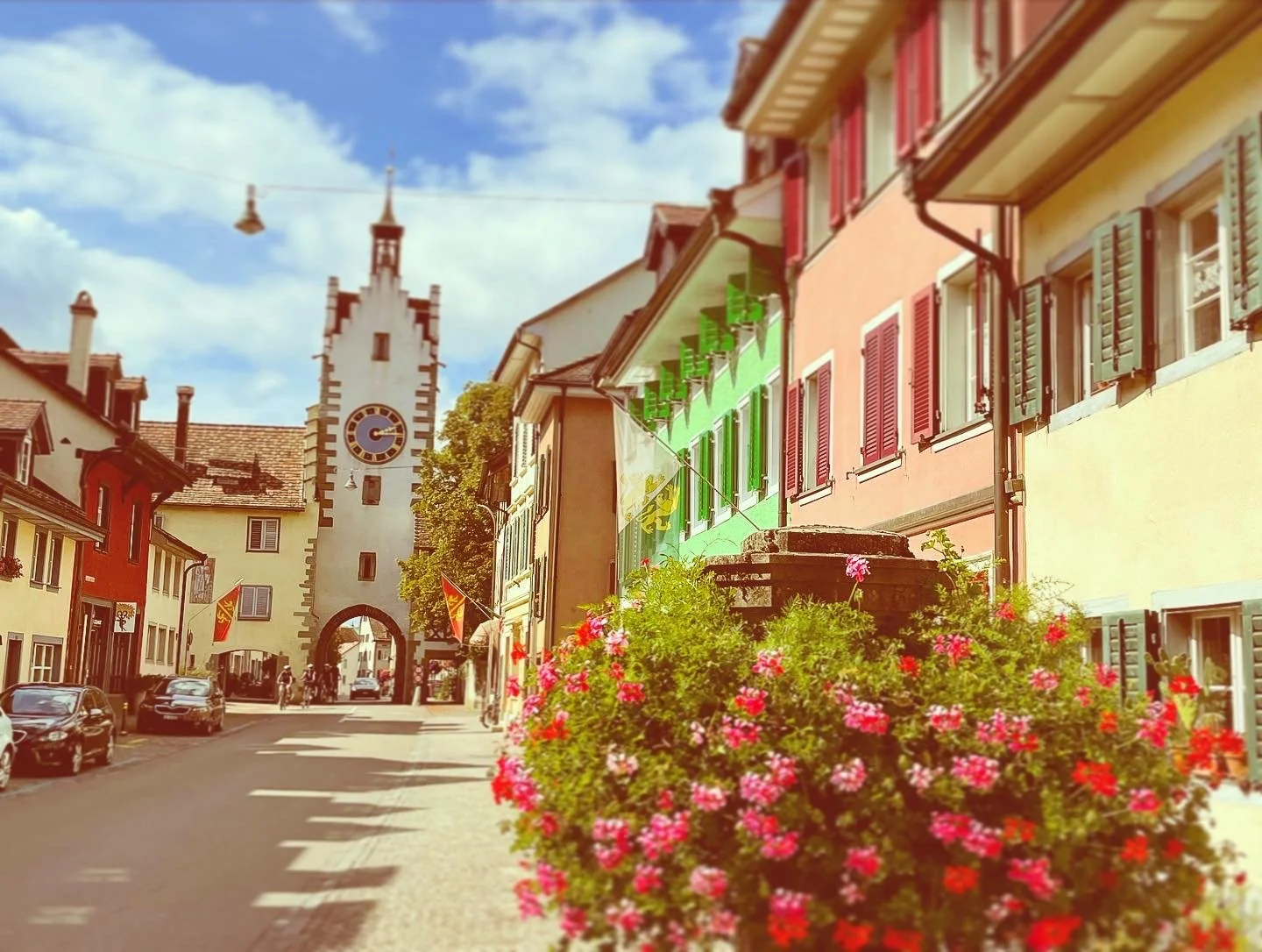Is this the world's most beautiful border? Driving from the Rhine Falls to Diessenhofen
A road trip along the Swiss-German border on the Rhein
This is going to be a short post sharing my experience driving, in the course of a single day, along the German-Swiss border and the river Rhine, visiting the Rhine Falls and several picturesque spots.
There’s just a caveat, though: I was fortunate to do this on a very sunny, warm day, which I guess it helps a lot when it comes to forming an impression about a place!
My trip actually started at Basel-Euroairport (BSL), a place that deserves, perhaps a post of its own (this piece about border airports I published on CNN comes close!), but this post will cover only the stretch between the Rhine Waterfalls (“Rheinfall” in German) in Schaffhausen, and the Swiss town of Diessenhofen, to the east of it.
In between the two is the German enclave of Büsingen, which is entirely surrounded by Swiss territory. On this site we are fans of enclaves, exclaves and all sort of border curiosities, so, of course, visiting Büsingen was also on the menu!
This is, in fact, an itinerary that is entirely recommended for border geeks, because, in addition to the beauty and general pleasantness of the place, crosses a number of international borders (as well as the outer EU border) quite a few times! The most picturesque of all these border crossings, though, was the Diessenhoffen bridge, which I leave for the last.
The Rhine Falls in Schaffhausen (Switzerland)
So, our itinerary starts in the Rhine Falls, which as the name implies, it is a major waterfall in the river Rhine. This is most likely the largest waterfall in Western Europe (outside of Iceland).
To be honest, it really surpassed my expectations!
It is not, of course, on the same level as the Niagara Falls, but they are certainly much larger and impressive than I expected. The river Rhine is gorgeous at this point, with very clean and turquoise water and the setting is quite beautiful with plenty of forestry and even a castle lining it.
What’s more, visiting the Rhine Falls is quite easy. They are located right next to the center of Schaffhausen, so they are very accessible and there are quite a few options to park your car nearby (it’s metered parking, so make sure you have some Swiss Franc coins with you, because the metering machines are rather old style!).
On the north side, which is the one on the Schaffhausen bank of the Rhine, there are several viewing platforms connected by stairs which let you get very close to the water. Access to the Rhine Falls viewpoints is totally free, btw.
The German enclave of Büsingen
So, after spending some time admiring the Rhine Falls, get back in the car and take Rheinhaldenstrasse, the street in Schaffhausen that follows the banks of the Rhine towards Büsingen and the German border.
You can also cycle this route or even walk it, because the banks of the Rhine have bike and pedestrian paths that will take you all along. As mentioned earlier, it was a really sunny day, and a weekend, so the area was packed with people strolling leisurely around.
There was quite a lot of activity in the river too, with boats and leisure craft of all sorts moving on the water too.
The Rhine at this spot upstream from the water falls is a rather wide and fast flowing river.
There are plenty of interesting spots along Switzerland’s borders (check, for example, my CNN story about the hotel that sits exactly on the border line between Switzerland and France) and Büsingen is one of them. This tiny German (and EU) town is separated from the German mainland by barely half a mile of Swiss territory, enough for it to have a special status in certain areas, which is regulated by a bilateral treaty between the two countries.
For example, while Büsingen is under German sovereignty, it is included in the Swiss tax and customs area, so VAT and other taxes are managed as if it was on Swiss territory. Likewise the Swiss Franc is the currency in use in Büsingen (although I guess the Euro is also commonly accepted). Both Swiss and German postal and telephone codes are also in use.
There are also no border controls coming in and out of Büsingen form Swiss territory. There is some border control infrastructure in the border between Switzerland and the German mainland east of Büsingen, although these are not manned (at least at the time of my visit), since Switzerland is now part of the Schengen area.
To be honest, there is not much to see in Büsingen, but from what you can see as you drive through it, it seems quite a pleasant and neat place and definitely worth the visit if you are interested in border curiosities.
Diessenhofen, a historical international bridge among the vineyards
So, having left Büsingen behind and never far from the river Rhine, I went on to our next and last stop of this border tour: the Swiss town of Diessenhofen and its very picturesque international bridge.
To get to Diessenhofen from Büsingen, rather than continuing all the way to the town of Gaillingen am Hochrhein, take a right immediately after passing the border of the German customs house (which is a couple of hundred meters after the actual border). This is a small local road that will take you directly to the bridge and to a large parking lot located on the German side of the river (here you will need some euro coins!).
The whole place is simply gorgeous!
There German side of the river has rather steep banks at this point, but the slopes are all covered by wineyards, which in late summer give it a lot of greenery and a rather gentle aspect.
The highlight here, however, is the bridge. It is, in fact, hard to get an international bridge as picturesque as the one at Diessenhofen.
It simply has it all: it is a beautiful wooden structure with a history that goes all the way back to the 13th Century (although the current structure is from the early 19th Century, the previous one having been destroyed during the Napoleonic Wars by retreating Russian troops), you can cross the international (and EU!) border on foot and there is plenty of beauty on both sides of it.
What’s more, adding to the sights, the Rhine itself is a constant spectacle.
It is not just the constant traffic of boats on its crystalline waters, but when the weather is nice, lots of people swim downstream, many of them on floats and inflatable devices of all sorts.
To be honest, I was really tempted to jump into the water and do the same!
The bridge can also be crossed by cars, although most of the traffic at the time of my visit were pedestrians.
This being one of the EU’s outer borders, there is the whole array of flags and national borders, although no passport controls (the old guard posts are closed).
It’s interesting to imagine what the experience of crossing this bridge may have been like in other times in which international borders, even between similar countries within Europe, was a much more formal affair.
Only the Swiss side is urbanized here (although there are some cottages on the German side) since the town of Gaillingen, Diessenhoffen’s German counterpart is a couple of km further north. In this pictures you can see how Diessenhofen looks like as you approach from Germany across the bridge.
And voilà! We are in Switzerland. Diessenhoffen is actually part of the canton of Thurgau and it is exactly as you imagine a fairy tale Swiss town would look like.
To be clear, Diessenhofen is quite tiny and it doesn’t take much time to see its historical center and perhaps sit down at one of the local cafés. There is not much else to do other than digest the urban cuteness overflow!
